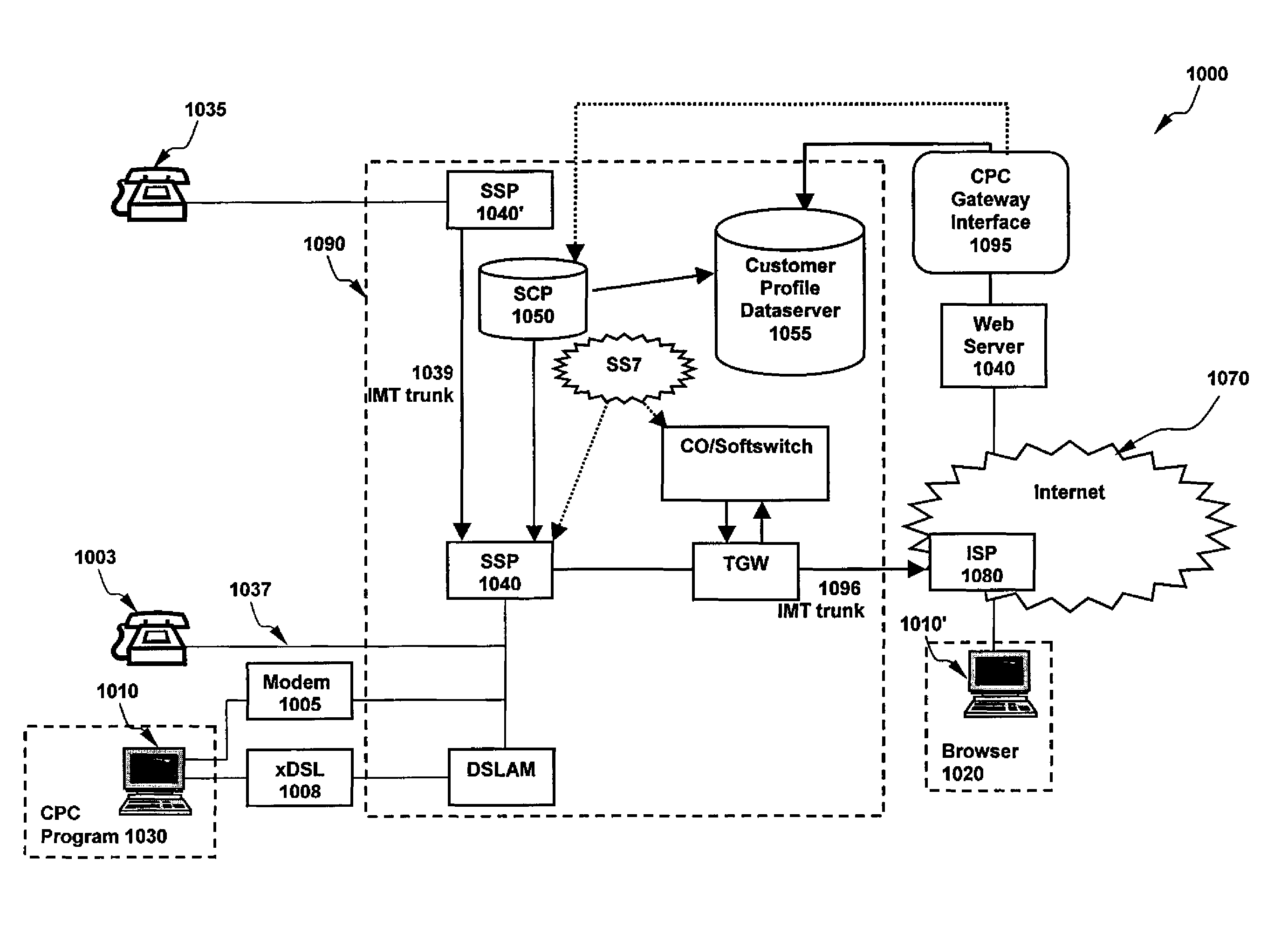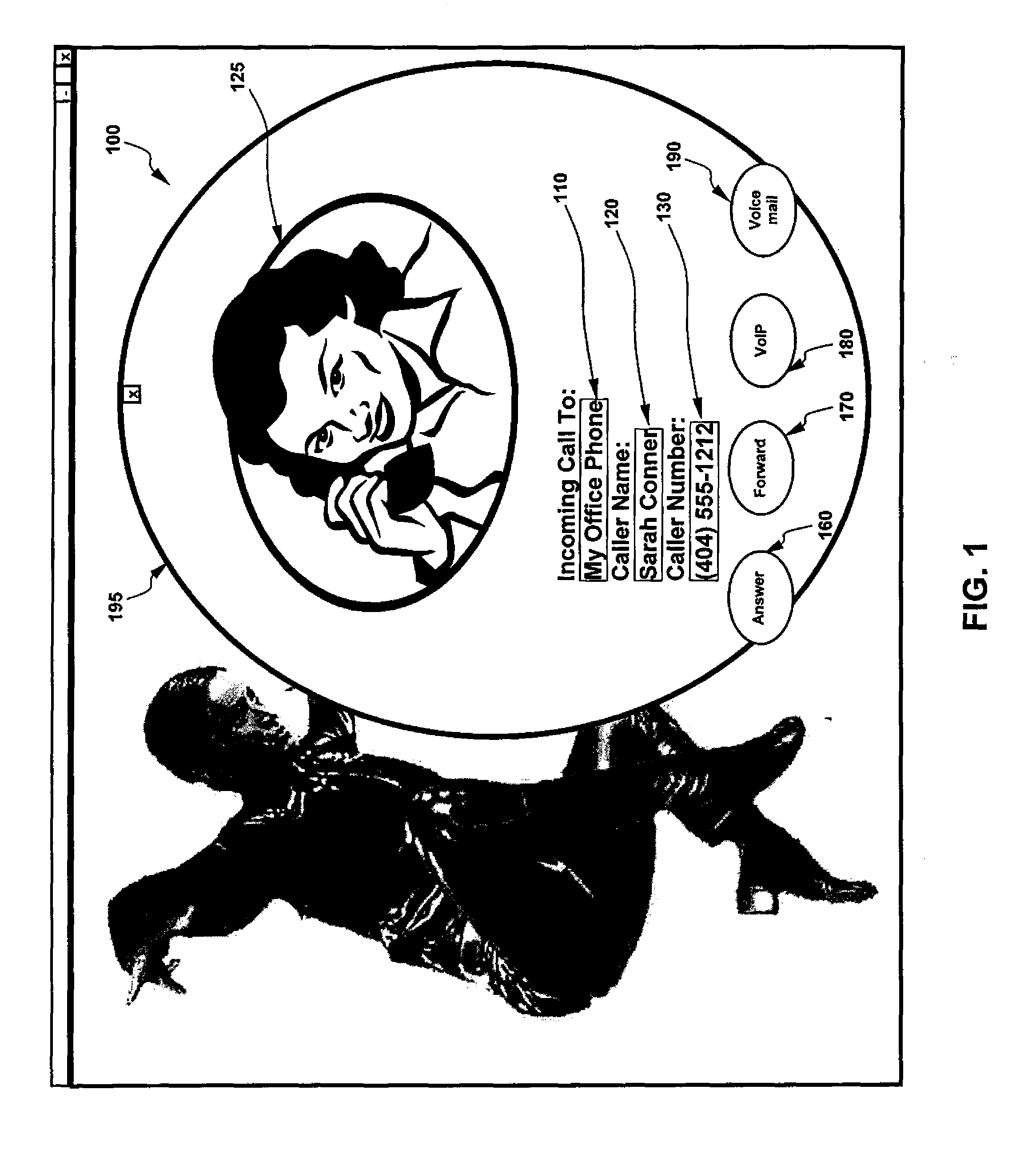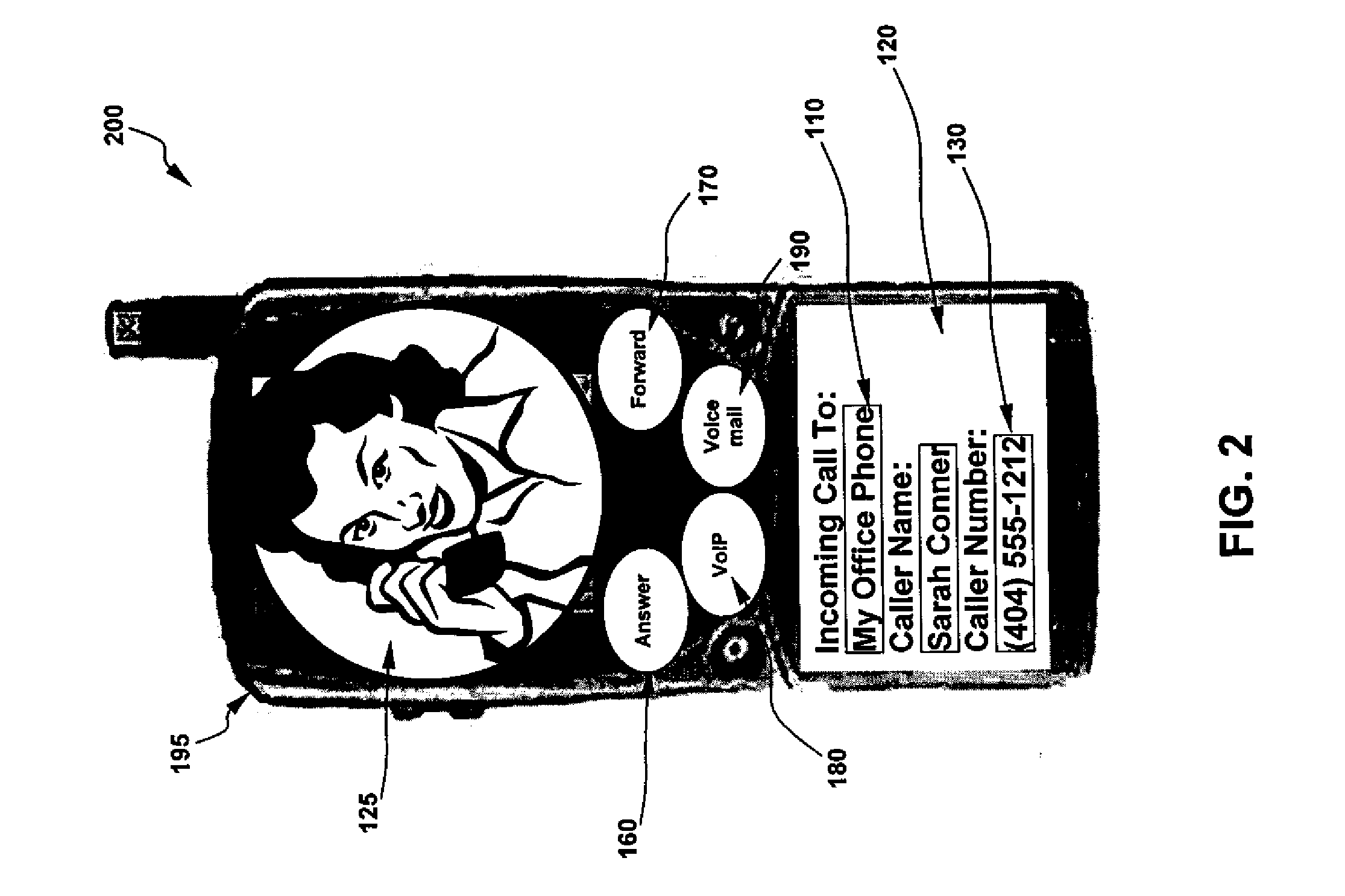System and Method for Monitoring and Handling Telecommunication Activity Via A Computer Network
a technology of a computer network and a monitoring system, applied in the field of telecommunications and computer networks, can solve the problems of affecting the user's call processing flexibility, affecting the user's call processing, and presenting several problems in the incoming call, so as to reduce the limitations
- Summary
- Abstract
- Description
- Claims
- Application Information
AI Technical Summary
Benefits of technology
Problems solved by technology
Method used
Image
Examples
Embodiment Construction
[0044] The present invention is typically embodied in a configurable PSTN call-handling (CPC) service offered by a telecommunications company to a user who is also telephone service subscriber. Generally, the CPC service allows the user to implement almost unlimited permutations of call-handling rules, based upon the characteristics of the incoming calls. The CPC service uses the Internet to monitor one or more subscriber lines, each associated with a directory number that is assigned to the user. The characteristics of incoming calls are communicated to the user and / or the user's PC via the Internet. The user can actively respond to incoming calls by selecting and transmitting call-handling selections to the communications network. Alternatively, the user can configure a CPC Client Program to respond to the incoming calls by implementing preselected call-handling options.
[0045] The CPC service is particularly useful in combination with an ICW system such as the system described in...
PUM
 Login to View More
Login to View More Abstract
Description
Claims
Application Information
 Login to View More
Login to View More - R&D
- Intellectual Property
- Life Sciences
- Materials
- Tech Scout
- Unparalleled Data Quality
- Higher Quality Content
- 60% Fewer Hallucinations
Browse by: Latest US Patents, China's latest patents, Technical Efficacy Thesaurus, Application Domain, Technology Topic, Popular Technical Reports.
© 2025 PatSnap. All rights reserved.Legal|Privacy policy|Modern Slavery Act Transparency Statement|Sitemap|About US| Contact US: help@patsnap.com



